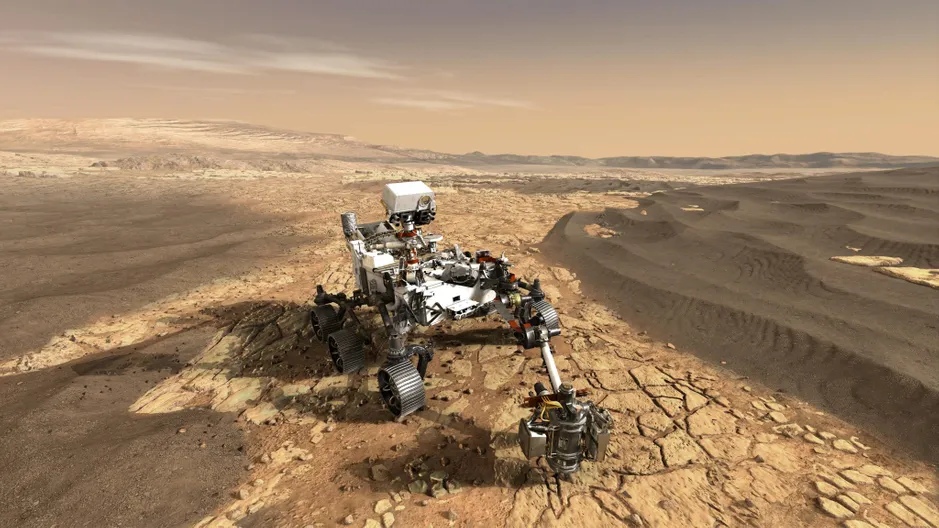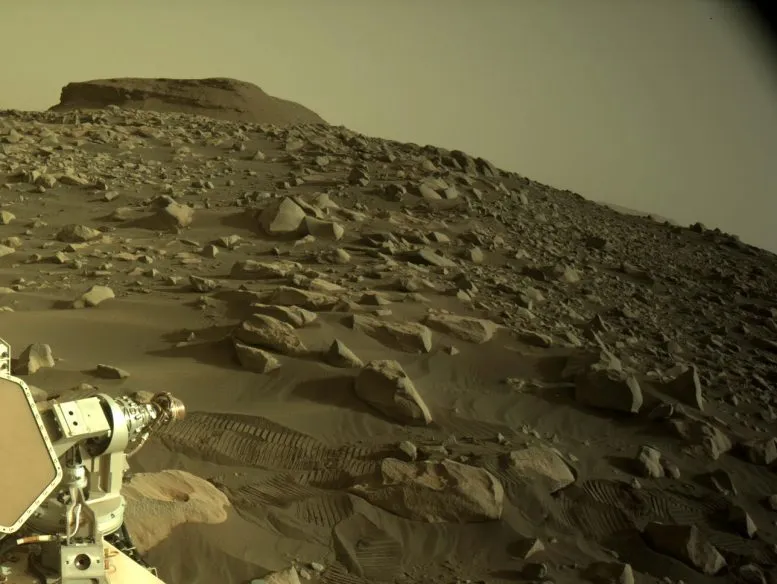On Mars, NASA's Perseverance Probe Officially Began Operation Delta Front. The Second Activity Of The Mission Began On April 18, 2022, The 415th Solar Day After Landing Each Activity Represents A Sub Part Of The Mars 2020 Mission, Which Is Committed To Exploring A Unique Area, Drilling Designated Cores And Preserving Them For Possible Return To Earth In The Future. Airborne Instruments Will Also Conduct A Large Number Of On-site Scientific Observations To Study The Geological And Environmental Characteristics Of This Area Of The Planet.

A Rise And Fall Of The Sun Is A Solar Day On Mars, That Is, A Martian Day. A Solar Day Is About 24 Hours, 39 Minutes And 35 Seconds, Slightly Longer Than The Earth Day. In The "crater Ground Action", Perseverance Spent More Than 400 Solar Days Roaming The Ground Of The Jezro Crater, Starting From The Landing Site Of Octavia-e-butler, Heading South To Explore The Best Exposure Of The Crater Ground Rocks, Then Turning Back North Near Saita And Approaching The Edge Of The Delta.
During This Crossing, Perseverance Drilled And Collected Eight Cores, One Atmospheric Sample And Sealed A Sampling Pipe. The Probe Described The Types Of Igneous Rocks That Make Up The Bottom Of The Crater, Studied The Martian Atmosphere And Dust Cycle, And Supported 27 Flights Of The Martian Helicopter Wit (this Miraculous UAV Is Still Healthy So Far!) Wait. Perseverance Also Used Cameras And Remote Sensing Instruments To Observe The Delta From A Distance And Prepare For The Delta Battle.
Here, You Can View An Interactive Map Showing All The Places That Perseverance Has Explored So Far:
https://mars.nasa.gov/maps/location/?mission=M20

Perseverance Looked At The Delta From Its Own Perspective On Day 419 And Took This Picture With Its Right Navigation Camera. Source: NASA / JPL Caltech
The Delta Front Activity Will Take About Half An Earth Year. Perseverance Will Roam 130 Feet (40 Meters) Above The Delta, Drilling Cores Along The Way And Describing The Characteristics Of The Layered Sedimentary Rocks That Make Up The Delta. These Sediments Were Deposited Billions Of Years Ago, When Water Flowed Across The Surface Of Mars And A River Discharged Into The Ancient Crater Below.
If Life Did Exist On Mars During This Period, The Remnants Or Characteristics Of These Organisms May Be Preserved In These Ancient Rocks. By Describing The Structure, Mineralogy And Organic Chemistry Of The Delta, Scientists Hope To Better Understand Jezero's Past Environment And Select Cores That May Have Astrobiological Significance To Return To Earth.
During The First Few Solar Days Of Activity On The Delta Front, The Perseverance Will Cross An Area Called The Cannery Passage, Which Is The Transition Area Between The Bottom Edge Of The Crater And The Delta. Next, The Scientific Team Will Have A Major Decision - Which Direction Will The Resolute Take To Climb The Delta?
Over The Past Few Months, The Scientific Team's Motion Planning Scientific Team Has Worked Hard To Map Out The Potential Path And Decided On Two Options. Nukshak Angle And Hawksbill Rock Fissure. Once Perseverance Gets Closer To This Path Point, The Images And Other Data Collected By The Rover Instrument Will Enable Scientists And Engineers To Better Understand Which Areas May Be More Valuable And Provide Better Opportunities For Scientific Measurements. After Choosing A Path, The Resolute Will Roam Along The Delta Layer, Stopping Along The Way To Analyze Sediments And Collect Cores.
When The Activity Of The Third Delta Will Be Completed, The Activity Of The Third Delta Will Be Completed.
